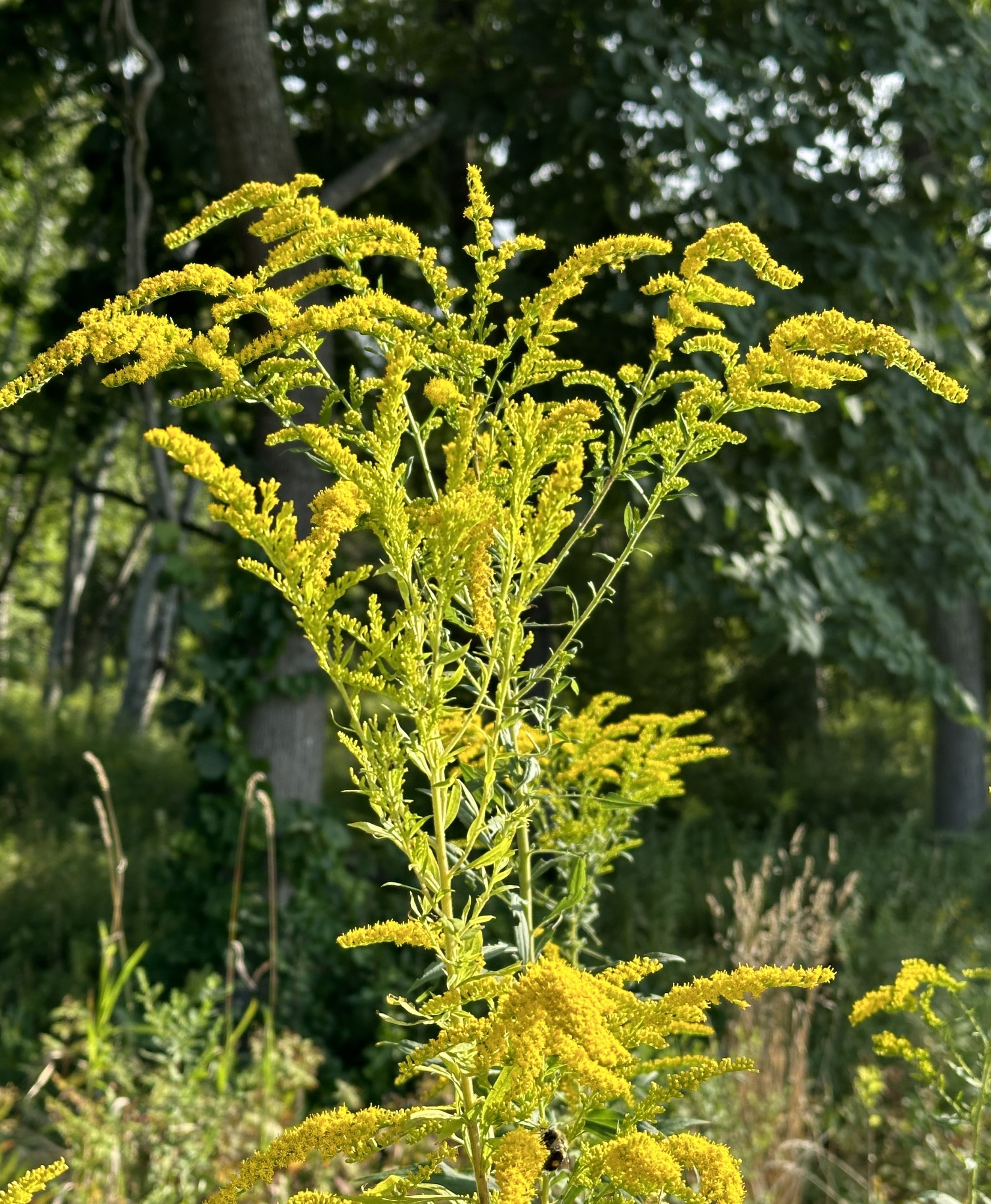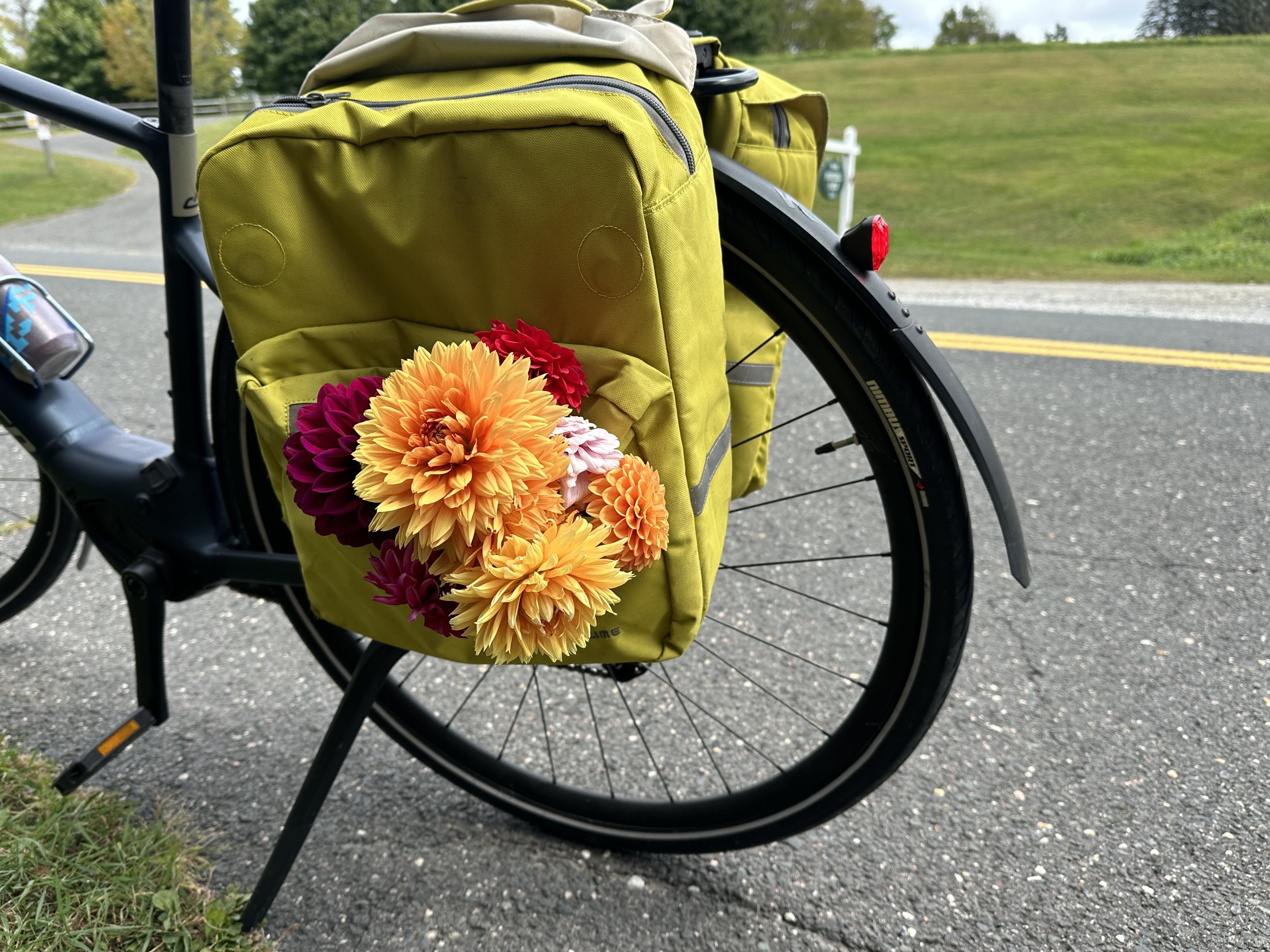Before the Fall
While pedaling past endless fields of our native goldenrod (Solidago) on my beloved Ebike, “September’s Idyllic Berkshires” struck me as an inspiring title for a new piece. Back home, all excited, I mentioned it to my husband, David who suggested instead:“Before the Fall”. This struck me as a rather sobering thought since the Equinox isn’t even upon us. Leaves are only hinting at what’s to come and the frost hasn’t wiped out the basil or white impatiens in my garden.
Still, a shift in seasons is occuring. While relishing in the crisp coolness of the air, I could breathe a sigh of relief from August’s hot and humid, claustrophobic days relieved by diving into a lake, or my backyard swimming pool. While so much evidence of climate change is depressing, even overwhelming, the presence of seasons, like the phases of the moon, bring a sense of continuity, of “normalness” to our planet. Migratory creatures such as warblers, honking geese, monarch butterflies and hummingbirds are, once again, heading south, taking their cue from shorter days now upon us.
September and June are my favorite months of the year. June offers a portal to a lush summer; September a hint of what’s around the corner: brilliant colors, outrageously shaped gourds and monstrous pumpkins and breezes filled with leaves falling like confetti.
Fortunately we can also enjoy by the roadside fields of wildflowers such as goldenrod, milkweed, Queen Anne’s Lace, native asters, and the invasive, but striking amethyst purple loosestrife, among others. Once sold in nurseries as an ornamental, it pops up quite uninvited by rivers and in the middle of fields.
purple loosestrife in field
A few closeups of autumn bloomers below including the “trashy” but striking purple loosestrife.
















